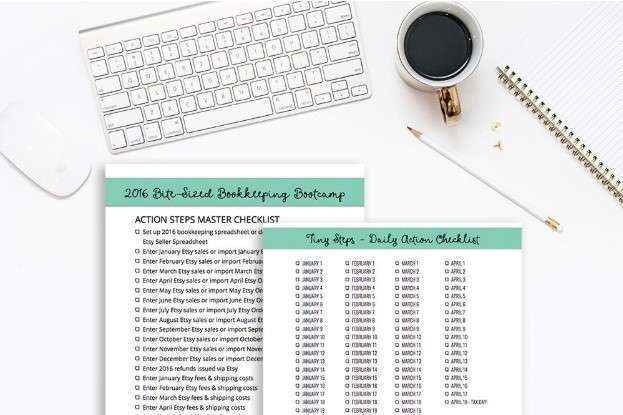What is Recurring Payment? Definition, Types & Benefits Essential Business Guides

Instead of paying the full amount upfront, https://www.bookstime.com/ installment billing allows you to divide the cost into manageable monthly payments. This way, you can enjoy your new furniture right away without emptying your bank account in one go. Tiered billing is versatile and can apply to a diverse range of services – from streaming platforms to SaaS companies and e-commerce retailers to small startups. This multi-level pricing structure means customers pay only for what they use or need. First up, let’s understand how a usage-based billing model fits into the recurring billing ecosystem.
Guide To Recurring Billing & Recurring Payments For Small Businesses
This may involve offering refunds, resolving payment disputes, or addressing billing discrepancies in a timely manner. Having clear procedures and guidelines in place for handling billing errors can help businesses recurring billing navigate these situations effectively. Furthermore, recurring billing can help businesses maintain a competitive edge in the market. By offering a convenient and flexible payment option, businesses differentiate themselves from competitors who may still rely on traditional payment methods. This can attract customers who prioritize convenience and ease of use, giving businesses a competitive advantage and increasing their market share.
Moving From a Focus On Acquisition to Recurring Revenue Models: Why and How

“#1 tip for pricing strategy is to treat it as an experiment.,” says Yoav Shapira, Director Of Engineering at Meta. However, your choice should be guided by your business needs, scalability prospects, and customer preferences. From here, you can also manage or modify any existing bills to reflect changes in amounts or frequency. These articles and related content is the property of The Sage Group plc or its contractors or its licensors (“Sage”). Please do not copy, reproduce, modify, distribute or disburse without express consent from Sage.These articles and related content is provided as a general guidance for informational purposes only.
Subscription Management Platforms
- Don’t make it unnecessarily difficult for customers to cancel or modify their contracts.
- Note that recurring billing is suitable for any type of business, not just subscription businesses, although it is predominantly used by subscription businesses.
- For example, a business might receive smaller monthly payments over a year instead of a large lump sum payment.
- As we wrap up our comprehensive look into recurring billing, it’s crucial to summarize the insights and lessons gleaned.
- In this blog we’ll delve into the realm of recurring billing, dissecting its significance, benefits, obstacles, and successful management solutions.
Not only can we automate your subscription billing — we’ll also act as your growth partner, scaling with you. Payment security is crucial in every business, and recurring billing is no exception. Protecting customers’ sensitive payment data from digital fraud is a huge responsibility. Subscription management tools that implement strong PCI compliance can help you safeguard sensitive data according to contribution margin industry standards.
What Is a Recurring Payment? How to Get Paid Faster with Automatic Billing
- If at this point, you don’t use a recurring billing platform to support your pricing model, it’s like putting jet fuel in a steam engine.
- Billing systems need to comply with various financial regulations, including tax laws and data protection legislation, like GDPR and PCI DSS.
- In fixed billing, the same amount is collected from the customer in every payment cycle.
- To process recurring payments, the business must get the client’s permission up front to charge a credit card on a recurring basis.
- For businesses, since the customers are automatically charged promptly in each cycle, recurring billing significantly reduces the chances of delayed payments and non-payments, which saves follow-up time.
A monthly recurring charge offers added flexibility for both you and your clients. Additionally, monthly invoices promote regular interaction with customers, which builds trust in your brand. In this article, we’ll define recurring billing and determine the best solution for managing recurring payments. Services like Recurly and Chargebee are subscription management platforms that work between the merchant and the payment gateway to manage all of those issues that are unique to subscription businesses.
Subscription Vs Recurring Billing – What Is The Difference?

By offering a subscription-based payment option, businesses can provide their customers with a sense of convenience and flexibility. Customers no longer need to worry about manually renewing their subscriptions or missing out on access to their favorite products or services. This seamless payment method ensures that customers can enjoy uninterrupted access, leading to higher customer satisfaction and loyalty. The customer sets up an order with an online pet store to have three bags of dog food delivered every three months.
Transparency in Recurring Charges
That’s the magic of recurring subscription billing — a payment model used by businesses globally to ensure seamless and uninterrupted access to their products or services. Managing recurring payments can be more complex than managing one-time sales. You need the right tools and processes in place for tracking customers on different billing cycles, paying different amounts, and with different contract lengths. Most SaaS companies combat this complexity by using an integrated subscription management tool that helps ensure customers are always charged the right amount at the right time. The subscription business model continues to flourish, from media and utilities to SaaS and digital services. This business model appeals to both enterprises and customers due to the steady cash flow and convenience that recurring payments offer.

What is Recurring Payment? Definition, Types & Benefits
Recurring payments are a convenient and automated way subscription businesses collect payments from customers regularly, typically for subscriptions, memberships, or services rendered over time. Instead of requiring customers to initiate each transaction manually, recurring payments allow businesses to charge customers’ accounts at predefined intervals automatically. Recurring billing, as the name suggests, involves charging customers for products or services on a recurring basis. Instead of making a one-time payment, customers agree to pay a fixed amount at regular intervals, such as monthly, quarterly, or annually.
How Stripe Billing enables businesses with recurring billing software
These are companies that help you accept electronic payments from customers—PayPal is one of the most popular examples of these. With variable or irregular recurring payments, the bill is dependent on the usage of the customer. This happens with water and electricity bills as the charge is based on consumption. A merchant account is a type of bank account that allows businesses to accept payments from customers’ accounts. The amount debited from the customer’s account gets deposited first in the merchant account and then transferred to the business’s bank account. While authorization isn’t a legal requirement for recurring credit card transactions, businesses may opt to get it anyway in case there’s a dispute.
